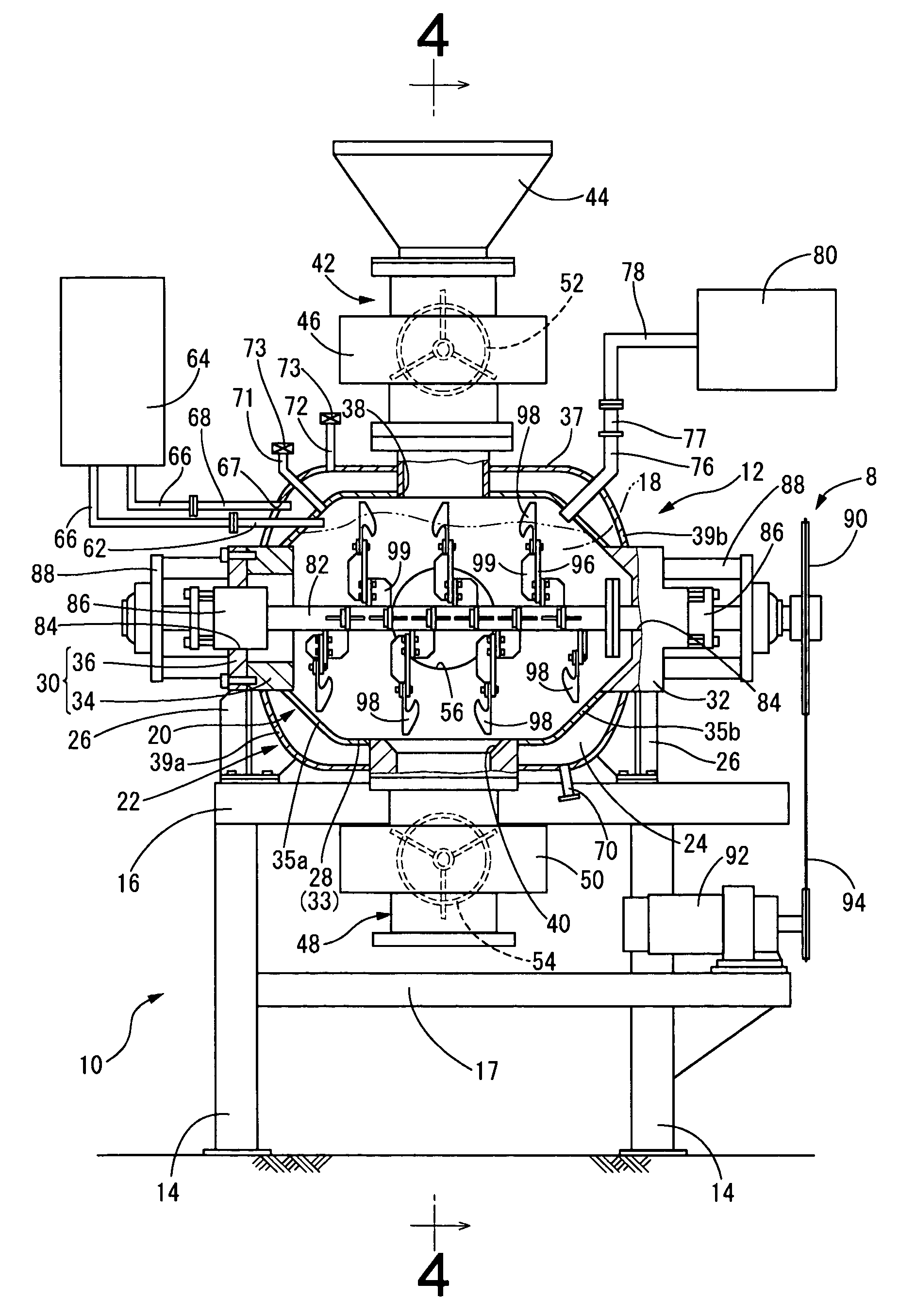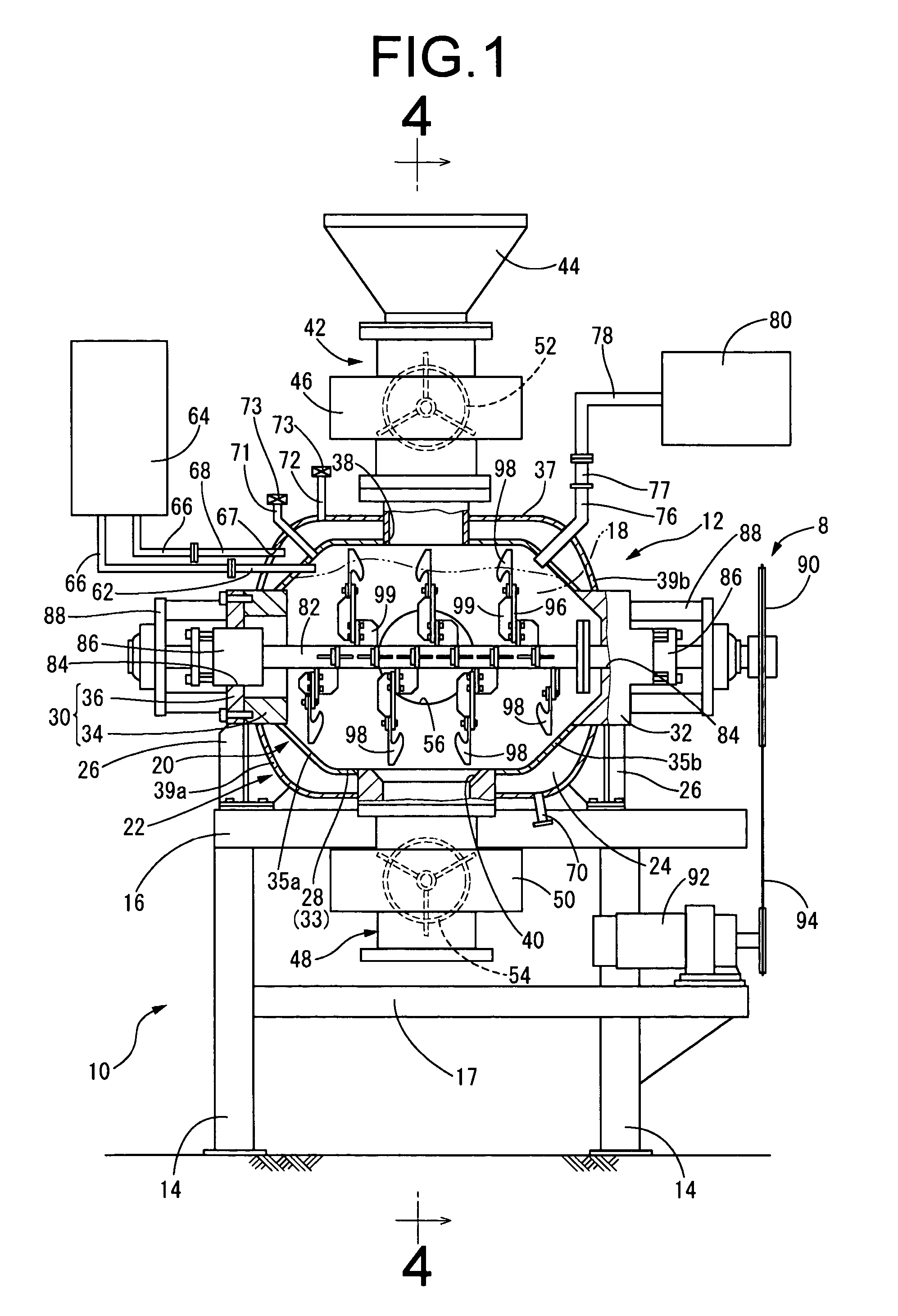Apparatus and method for treating organic waste and organic material obtained by the treatment method
a technology of organic waste and equipment, applied in the direction of drying solid materials, drying machines, combustible gas production, etc., can solve the problems of unresolved problems (2) and (3), the revaluation of such practices is imperative, and the efficiency of absorption by livestock or plants is low, so as to achieve simple procedure and high quality. , the effect of high quality
- Summary
- Abstract
- Description
- Claims
- Application Information
AI Technical Summary
Benefits of technology
Problems solved by technology
Method used
Image
Examples
Embodiment Construction
[0055]In order to provide a fuller understanding of the present invention, the embodiments of the invention will be described in detail below with reference to the accompanying drawings.
[0056]First, FIGS. 1 to 3 depict in simplified form an embodiment of an apparatus for treating organic waste having a structure according to the invention, shown in front view and in left and right side view respectively. As will be apparent from these drawings, the treatment apparatus 8 of the present embodiment has a base 10 and a container unit 12 that is supported on this base 10.
[0057]More specifically, the base 10 is composed of four legs 14 and an upper frame 16 of rectangular frame shape secured to the tops of the legs 14.
[0058]Meanwhile, the design of the container unit 12 includes a vessel 20 adapted to hold organic waste 18 (represented by double-dot and dash lines in FIG. 1) in its interior, and a cover vessel 22 arranged enclosing the entire outside peripheral face of this vessel 20. The...
PUM
| Property | Measurement | Unit |
|---|---|---|
| pressure | aaaaa | aaaaa |
| pressure | aaaaa | aaaaa |
| pressure | aaaaa | aaaaa |
Abstract
Description
Claims
Application Information
 Login to View More
Login to View More - R&D
- Intellectual Property
- Life Sciences
- Materials
- Tech Scout
- Unparalleled Data Quality
- Higher Quality Content
- 60% Fewer Hallucinations
Browse by: Latest US Patents, China's latest patents, Technical Efficacy Thesaurus, Application Domain, Technology Topic, Popular Technical Reports.
© 2025 PatSnap. All rights reserved.Legal|Privacy policy|Modern Slavery Act Transparency Statement|Sitemap|About US| Contact US: help@patsnap.com



